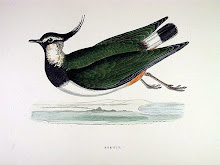
Welcome, Trinity Term 2009. And welcome, long-tailed shrike, chosen bird of first week. Only once have you set claw in the British Isles, and that was in November 2000. We'd like it if you came back because you have a nice peachy coloured body and pearl grey head, not to mention a black mask extending from the forehead across the eyes and to the ear coverts.
Welcome also, followers of the TWW blog. If YOU would like to see the long-tailed shrike, you must follow the law of Mohammed and the mountain and go to South or South-East Asia, where it can be found perched on bushes from Kazakhstan to New Guinea. Perhaps you could woo it with a tasty lizard, insect, small bird or rodent. However, it needs no human help and is quite able to fend for itself: the shrike is skilled at impaling its prey on a thorn or some such sharp point, and then ripping it apart with its strong hooked bill. Yum.
The flight of the long-tailed shrike is undulating, but do not be deceived, for its dash is straight and determined. We do like a bird of resolve.

